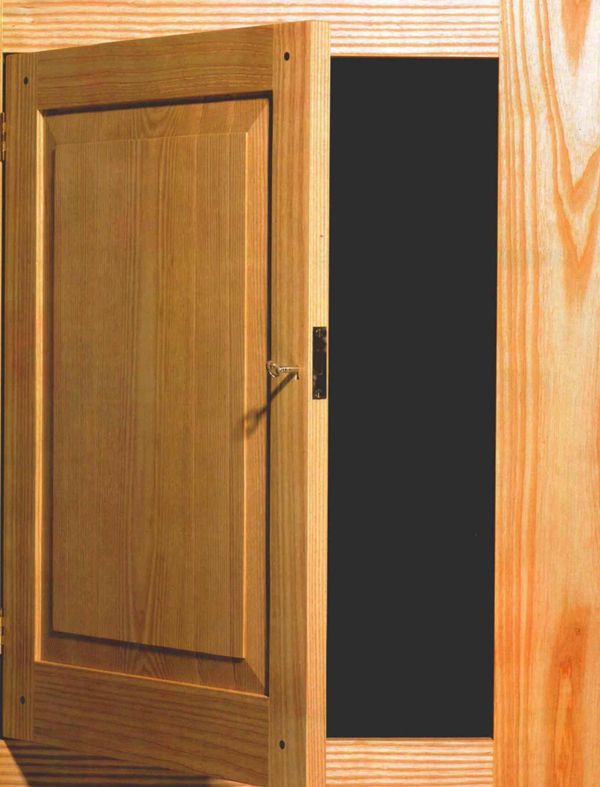
Synopsis: Christian H. Becksvoort talks about appropriate catches for various types of cabinet doors and advises that you pick one that’s in keeping with the period, style, and function of the cabinet. He details a few fasteners and explains how to attach them and what they’re best used on. He discusses magnetic catches, touch latches, bullet catches, spinners, double-bail catches, key locks, and double door fasteners.
A handsome cabinet door, hung precisely in its frame, is a pleasure to use. But the door isn’t quite finished until it’s been fitted with a proper catch. There sure are plenty of choices, from simple turn buttons to elaborate library catches. The hard part is picking the catch that’s appropriate. What’s appropriate? A catch that is in keeping with the period, style and function of the cabinet. Brass bullet catches, for instance, would look out of place on an Arts-and-Crafts piece with hand-wroughtiron hinges and knobs. Likewise, high-end furniture is no place for plastic-encased magnets or for steel touch latches that are stamped out by the carload.
Catches have functional as well as aesthetic differences, and some catches work better than others on certain kinds of doors. And like everything else, door catches vary in price. Their cost in relation to a piece of furniture is very small, though, so it makes sense to choose exactly the right one.
To help you sort through some of the choices, I have taken a look at a dozen of the most popular door catches. They “include commercially available catches and locks, as well as mechanisms built in the shop. In addition to trying these different catches for single doors, I’ve also found some interesting ways to keep double doors closed, especially in those difficult situations where there is no center divider between the doors.
Magnetic catches
Magnetic catches come in a variety of sizes and shapes and can be used for single or double doors. For large doors, magnetic catches often are used in pairs—at the top and bottom of the door. Most et engages and holds the door closed. Then, when tapped or touched, the ratchet releases, and the spring mechanism pushes the door open. Unlike a mechanical latch, a magnetic touch latch magnetic catches are housed in plastic, which I find objectionable for high-end work.
From Fine Woodworking #114
For the full article, download the PDF below:
Fine Woodworking Recommended Products

Starrett 12-in. combination square

Festool DF 500 Q-Set Domino Joiner

Dubuque Clamp Works Bar Clamps - 4 pack























Log in or create an account to post a comment.
Sign up Log in